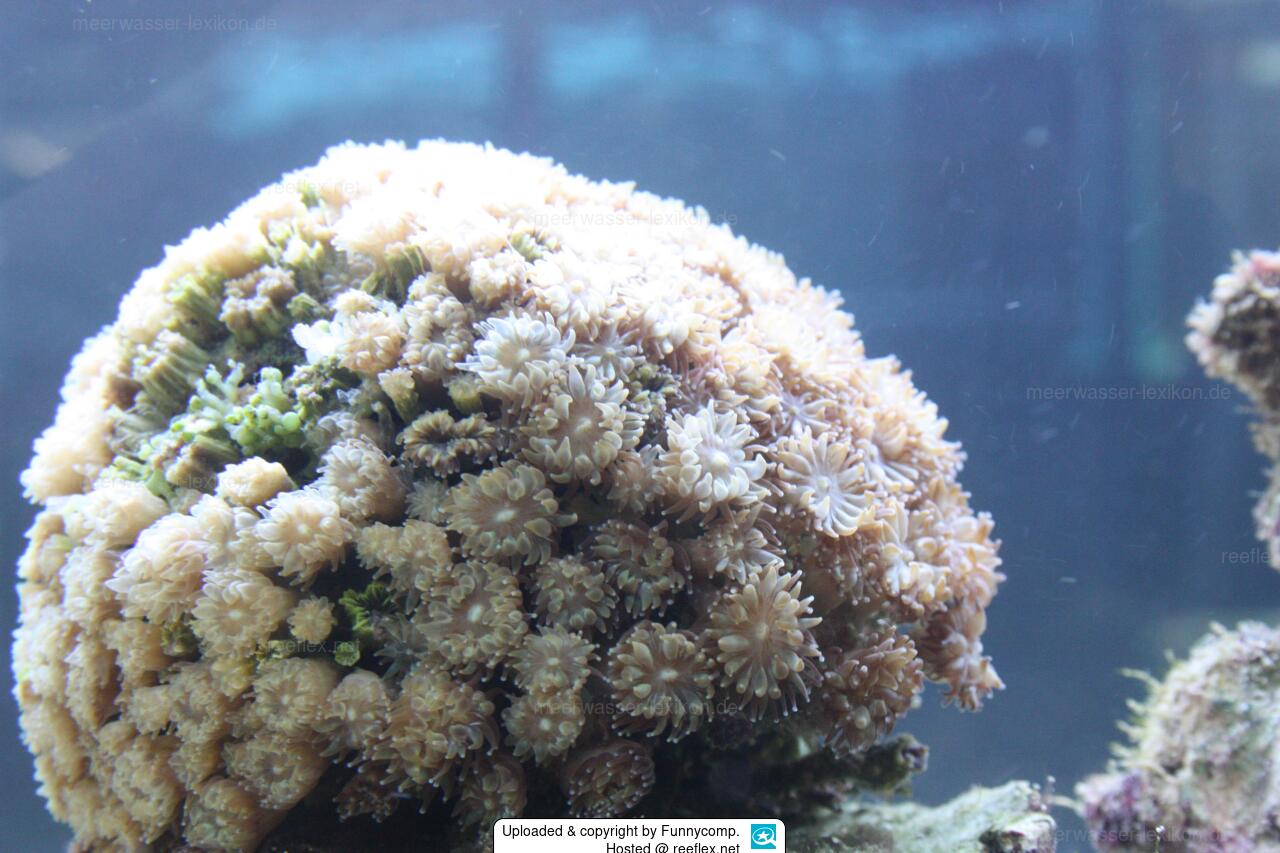Info
Description: Colonies are up to 30 cm across and consist of irregular branches composed of irregularly fused corallites which vary in size. Larger corallites have three cycles of septa. Primary septa almost reach the corallite centre where they plunge vertically. Third cycle septa are short. Septa are not as exsert as in other Galaxea species. There is no columella. Two subequal cycles of costae extend down the outer wall of all corallites, becoming submerged in the coenosteum. The surface of main branches is composed of smooth coenosteum. Tentacles are extended day and night.







 Funnycomp
Funnycomp









